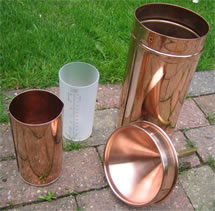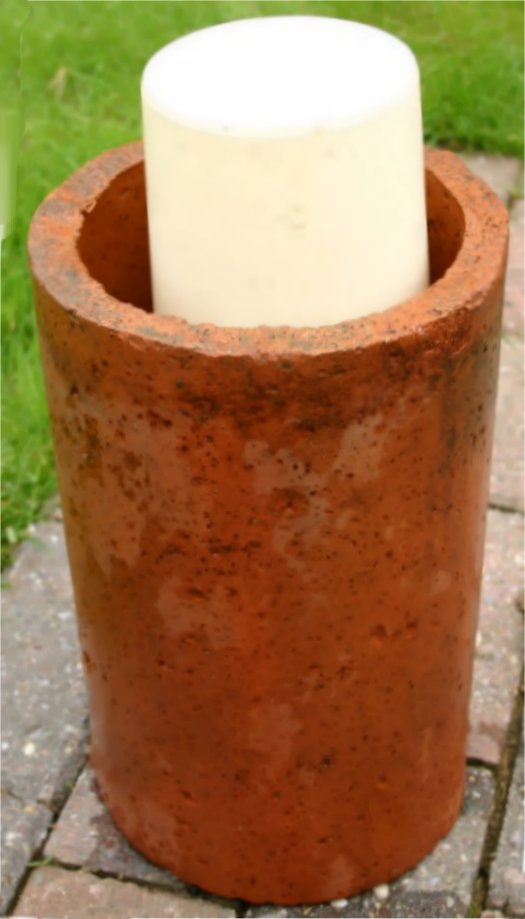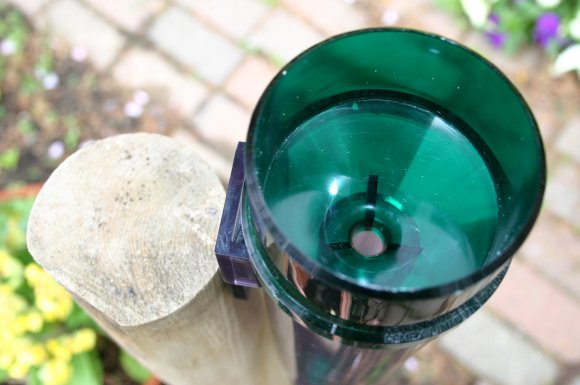More About Precipitation
Weather watchers measure the precipitation at 09.00 local time at the same time as they do the other weather readings.
There are many different types of rain gauge. A couple more examples are shown
here. Remember that it is important to put your gauge away from anything
which might stop the rain getting into the gauge. You do not want
a tree or a wall acting like an umbrella.
When you have finished reading about this you may want to return to Precipitation or the Collecting Data page. You may also like to have a go at the Rain Gauge Quiz. See More About Setting Up for details of where to place your rain gauge.
Stopping EvaporationIt would be very bad if the rain in your gauge evaporated before you took your readings. Some gauges have an outer container with a funnel which channels the rain into an inner measuring container. The example on the right has had its lid removed to show the inner container. |
|
Keeping Your Rain Gauge StableHere is a rain gauge placed into a earthenware tube. This stops it from being blown over by the wind or accidentally being kicked over. |
|
Securing a Rain GaugeThis type of gauge can be mounted on a post or fence. Here it is shown slotted into its mount. Note how the gauge has been placed so that its funnel is above the post. If it were not placed like this the post would shield the gauge from the rain and the readings would not be accurate. |
|
The FunnelRain gauges are made with the funnel the correct size to produce appropriate readings. If you use a specially manufactured gauge you will be able to compare your readings with others. Although it is fun to make your own rain gauge, it is hard to make one as accurate as the bought ones. |
|
Automatic Rain GaugesWhen you are away you could leave an automatic rain gauge taking readings for
you. These should be placed just as carefully as ordinary ones,
well clear of anything that would stop the rain from reaching
the funnel. |
 |
Copper Rain GaugeThis copper rain gauge is made up of several parts. Copper has been used because it will not go rusty. It is also good at preventing mould growing in the damp conditions. This type of rain gauge is quite expensive. |
 |
Tipping BucketsSome automatic rain gauges use a tipping bucket mechanism to measure the rain. When one side of the see-saw buckets fills it becomes too heavy, tips and is counted. The other side then starts to be filled. This type of rain gauge may not be quite as accurate, as it may not rain enough to tip the bucket, so that bit of rain does not get counted. |
[No speech] |




